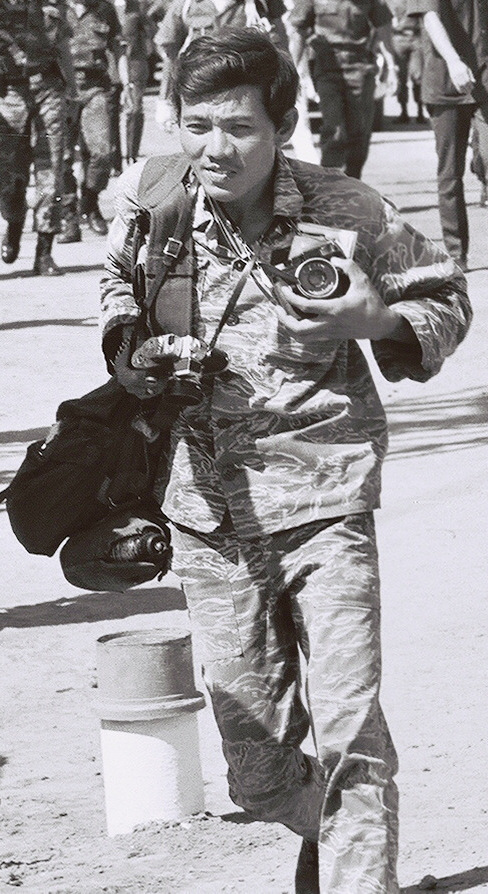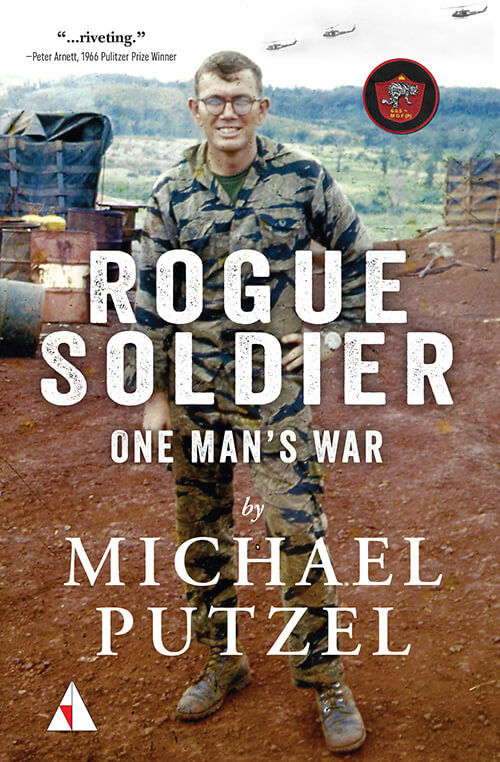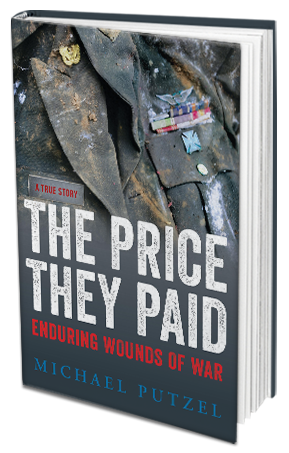Blog
A good Memorial Day for one family
Posted by Michael Putzel • May 27, 2018
It is among the worst days I remember.
On February 10, 1971, a South Vietnamese military helicopter was shot down in Laos, killing all those aboard, including four combat photographers for Western news organizations and a South Vietnamese army photographer who worked as a stringer for The Associated Press when he shot something worthy of worldwide exposure. His name was Tu Vu, an amiable young man, dedicated to his craft and anxious to succeed.

I was covering the same operation as the others, an audacious invasion of Laos by U.S. aircraft and South Vietnamese ground forces to cut the notorious Ho Chi Minh Trail, North Vietnam’s principal supply route to wage war in the South. I had seen them that morning. They were glad to be the first journalists picked to cross the border for a close-up look at the offensive. A short time later, walking past a military radio, I heard their helicopter had flown over an enemy antiaircraft gun and was shot out of the sky. They never had a chance.
Among those killed was a dear friend, mentor and AP colleague, Henri Huet, who with Larry Burrows of LIFE, also on board, was at the top rank of war photographers anywhere. The other two were younger but also well regarded: Keisaburo Shimamoto shooting for Newsweek and Kent Potter for UPI. Only a few of us knew Tu Vu, the soldier/stringer.
For nearly three decades, although their fate was presumed, there was no physical evidence to prove those men and six others aboard, the flight crew and two senior South Vietnamese officers, had died in the crash.
In March 1998, Richard Pyle, who had been AP chief of bureau in Saigon that day, and Horst Faas, the legendary AP photographer and photo editor, accompanied a joint military task force that located the crash site on a jungled hillside and confirmed the presence of some human remains, camera parts, ruined film, bits of clothing and other evidence that eliminated any doubt. The team had found the downed aircraft, and no one could have survived.
Eventually, experts determined that the remains were insufficient to link them conclusively with any of the individuals aboard the aircraft, and it was agreed they would be commingled as representative of all the victims. Following lengthy, multinational negotiations, Pyle persuaded the Newseum, Washington’s “museum of news,” to accept the remains for interment in a new Journalists Memorial when the Newseum’s new building on the National Mall opened in 2008.
What none of us knew at the time and didn’t learn until after the opening was that Tu Vu left a widow and infant daughter—and no one had ever informed them of what had happened to him. A distant relative, on a visit to the United States, learned of Pyle’s and Faas’s 2003 book, Lost Over Laos, and heard Tu Vu and the others were buried in the Newseum. The relative contacted Pyle, and we quickly dispatched the book and some photos to the family in Ho Chi Minh City.
That launched Tu Vu’s daughter, Vu Thuy, on a campaign to visit the United States and the father she had never known. She was 3 months old when Tu Vu was killed 47 years ago. Thuy raised some money and began applying for a visa to visit Washington, but despite Pyle’s and my support of her application, U.S consular officers repeatedly turned her down. She had grown up knowing only that her father never came home from the war.
Not long after Pyle died last fall, Thuy approached me again, and I wrote yet another invitation, but that time—at her suggestion—I asked a contact at the Newseum for some confirmation that Tu Vu’s remains actually were on the site. Despite Pyle’s efforts, only the four civilian photographers are named on the floor plaque and in most Newseum records.
The Newseum considered the Journalists Memorial as just that, a tribute to photographers and correspondents killed covering the news. Nonetheless, when I approached Patty Rhule, senior director for exhibit development, she remembered the case and found a poster with the Vietnamese names on it that was used several years ago when some relatives of the pilots visited the Newseum. That helped, but not enough.
I asked her if the Newseum would consider issuing its own invitation to the family as a way of authenticating Tu Vu’s status. She not only agreed but timed the invitation to go out two months before the annual rededication ceremony and named everyone in Tu Vu’s immediate family as welcome guests for that occasion. Diplomats call deadlines like that “decision-forcing events.”
The consulate scheduled required personal interviews for Thuy and her mother, but for a later time that would cause them to miss the ceremony. Armed with the new invitation, Thuy persuaded the consulate to move up the date—and they got their visas.
On June 4, when the Newseum adds 18 new names to its memorial to honor journalists who died in 2017, Tu Vu’s family members will at last be present to pay their respects to the combat photographer who never came home.
11 thoughts on “A good Memorial Day for one family”
Comments are closed.







Wow, Mike, what a fabulous tribute. The permanent Vietnam Wall and the temporary Wall of Poppies on the Mall are stirring, but a personal anecdote like this really grabs my heart. Thank you for writing it.
Thank you, John. I appreciate your saying so.
Great stuff, Mike. Thanks.
Thanks, Mike, for a great story for any day but especially for Memorial Day.
ford
Thank you for doing this.
Thank You, Mike.
Thanks, Derek
Thank you, Mike, a sad, but beautiful story that earns you place among the noble of that war.
Thank you, Jim. You’re very kind. Just sorry Pyle wasn’t with us to see it.
Mike Thank You for this powerful Memorial Day piece. ==jim
Jim, sorry I missed your comment but glad you liked the piece. Sequel upcoming. Wish you’d been here to shoot it.